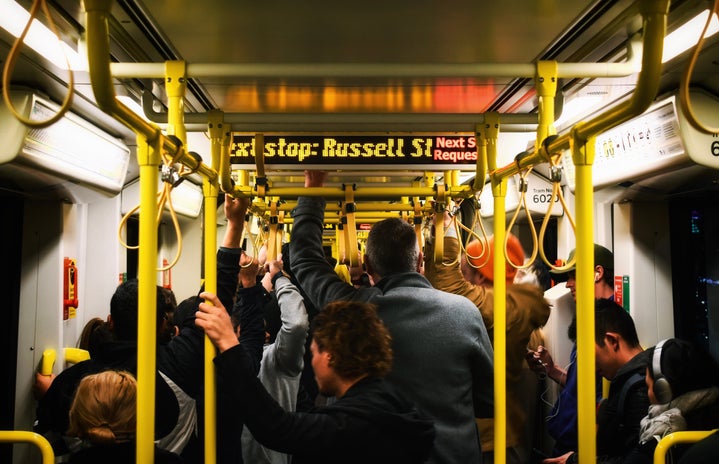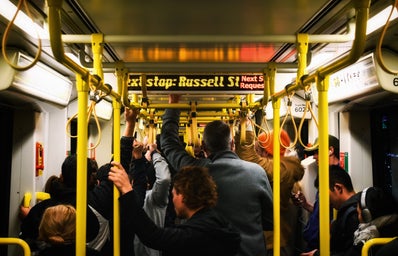“Agla station Durgabai Deshmukh South Campus hai”
“Kripya dawrazon se door hat kar khade ho”
The familiar voice of Shammi Narang reverberates as the Metro enters the platform. For many, Metro is a second home, a comfortable and convenient travel to work, college or home. It connects places from the far corner of the National Capital Territory of Delhi. But don’t you ever wonder what went behind the making of this technological marvel?
A Metro, or Rapid Transit System is usually built in cities where heavy traffic causes major inconveniences. It is a sign of development and provides a smart solution to regulate traffic jams. The need for a Metro in Delhi was felt when the population grew from 57 lakhs to a whopping 120 lakhs in 1998. Delhi largely relied on private transportation as comfortable means, since public transport meant shaky autorickshaws and tiresome bus journeys. This not only increased traffic on the road, but also the air pollution. Metro provided an eco-friendly solution to Delhi’s problem, since it runs on electricity.
The Kolkata Metro was the first Rapid Transit system in India, opened in 1984, setting a precedence in traffic regulation of big cities. But the problem was, it was inflicted with various technical limitations. Under complete supervision of the Indian Railways (a government body), Kolkata Metro relied on all decisions on them. They lacked prerequisite knowledge to manufacture rakes, coupled with political influence. This led to delays, lags and mismanagement. According to E. Sreedharan, engineer and founder of the Delhi Metro, a private company were better suited for the job rather than Indian Railways.
To prevent this from happening in Delhi, the Delhi Metro Rail Corporation or DMRC was formed in 1995. It was an autonomous body, free of the political control and bureaucratic corruption. It could take decisive actions freely, quickly and innovatively, dodging delays and bankruptcy. As Managing Director, Dr E Sreedharan began construction process instantly. Their unique policy they adopted was to not take longer than five years to construct a line. When the construction of a line was almost complete, they started with the next one. Their construction occurred neatly enclosed inside barricades, minimising inconveniences. Any hurdles faced by the engineers’ team were innovatively dealt with. Hence, they were able to meet deadlines, often even before the assigned dates. Delhiites used to regular delays and inconsistencies were thrilled.
Mind you, years 1969 to 1984 witnessed nothing but inconclusive planning and delays, no actual action was taken. Once the DMRC was formed, only then the work started and achieved speedy execution. Hence Sreedharan was promptly proven right once the metros started running. The successful model of the DMRC became an inspiration for Metro projects in cities such as Mumbai and Bangalore.
The Phase 1 of the Delhi Metro was a success by 2006, consisting of 59 stations over 65 kilometers. On the Christmas Day of 2002, the Red Line Metro started running from the stations Shahdara to Tis Hazari. Yellow and Blue Lines were next. The Phases II and III included the construction and success runs of Green, Violet, Pink, Magenta, Grey and Airport Express Lines. Today, there are a total of 255 Metro Stations spanning over about 350 kilometers. Out of all the 16 Metro networks in India, the Delhi Metro is the largest. They all together make the Indian Metro Network fourth largest in the world.
DMRC is also an expert at the upkeep and maintenance of the Delhi Metro. Their work ethics bound them to ensure safety of the passengers, help them when required, while maintaining cleanliness and aesthetics of the place. The Metro trains run at short uniform intervals and have reserved seat for women, elderly and physically disable. The best feature of the Delhi Metro, in my opinion, is the women’s coach that ensures a safe journey to women, encouraging more women to travel. The first metro museum in South Asia is located in the Patel Chowk Station! The Delhi Metro was also awarded with the Golden Peacock Environment Management Award in 2005 for its ecological contributions.
There might sometimes be delays, but the Delay Metro never fails you. Problems are resolved in the blink of an eye. It is not just a transportation service, it is an emotion and Delhi’s pride. And you cannot deny that there is something oddly satisfying about watching Metros taking a grand entrance in the station.


